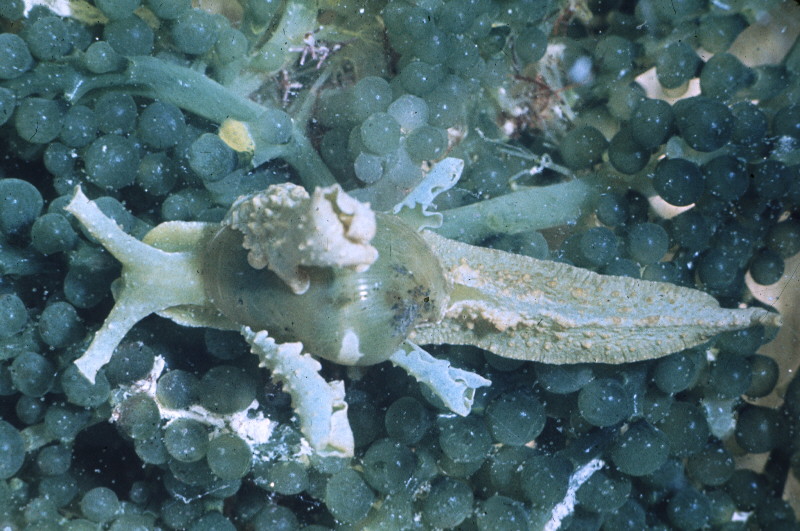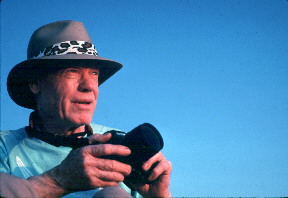 |
Lobiger souverbii
Photo courtesy of Dave MullinerLobiger souverbii is a fascinating opisthobranch, and one which has caused some discussion concerning its variation from one ocean to another, and whether or not it is synonymous with Lobiger viridis. I will leave those discussions for another day and only address here, Dave Mulliner' s documentation of the species from the Galapagos Islands.
Lobiger souverbii is a small sacoglossid, found primarily on the green algae, Caulerpa. It has retained an external shell which is semi-transparent. Like other sacoglossids it has rolled rhinophores. This species is characterized by its four long parapodial lobes, which often are seen rolled up like the rhinophores. These extensions of the mantle may become severed or autotomized when the animal is disturbed. This has led to some confusion, with several species (an in fact the original description of Lobiger souverbii) being described as having only two lobes (see the original Fischer illustration on Bill Rudman's Sea Slug Forum ).
The body is green, making it difficult to find on its algal food source, with varying amounts of lighter speckling. The surface texture found on the foot and tail, also occurs on the lateral lobes and rhinophores.
The distribution of this species is circumtropical, including not only the first to my knowledge Galapagos occurrence shown here but, Santa Cruz, Nayarit, Baja California Sur, the Caribbean, Lord Howe Island, Australia, Hawaii, and the western Pacific.
Additional photos of this species can be found in Ono species #044, Debelius , bottom of page 163, Coleman , pages 128-129, and in Paul Humann 's Caribbean Reef Creatures Guide.
Danville, Calif
Apr., 2002

Send Dave mail at mulliner1@juno.com |
Taxonomic information courtesy of:

David W. Behrens
Author:
Pacific Coast Nudibranchs
Send Dave mail at seachalleng@earthlink.net
|
